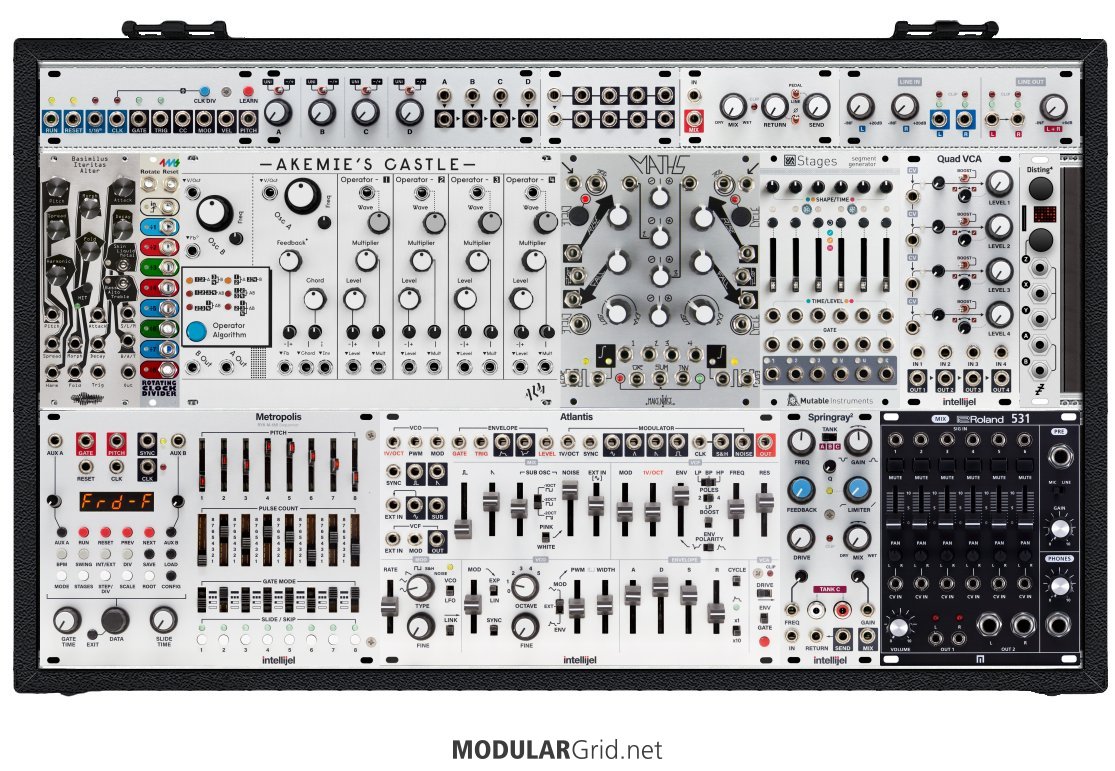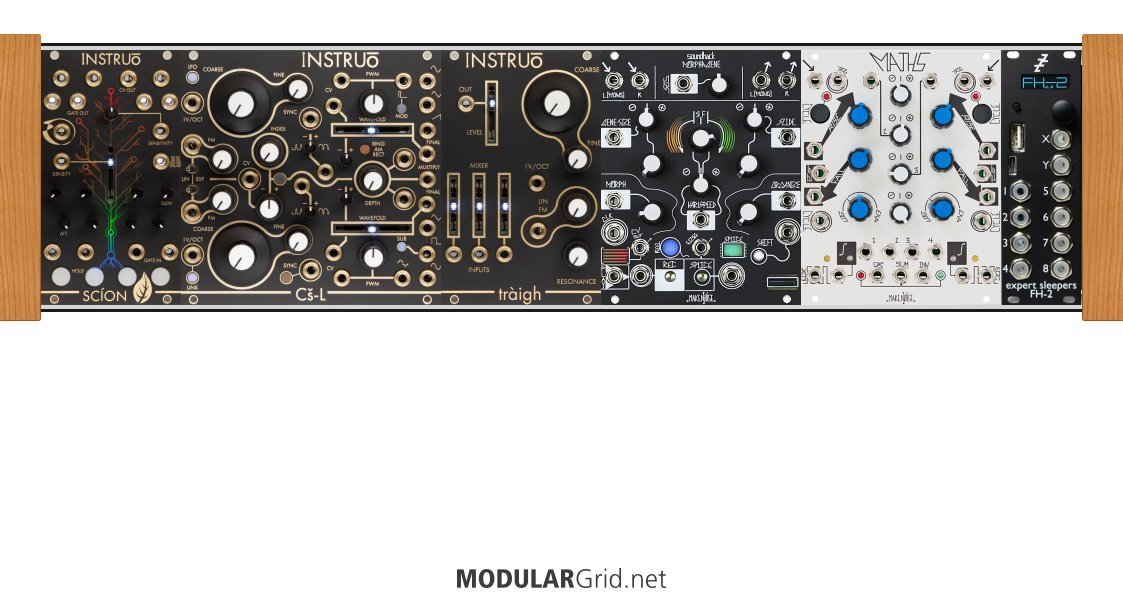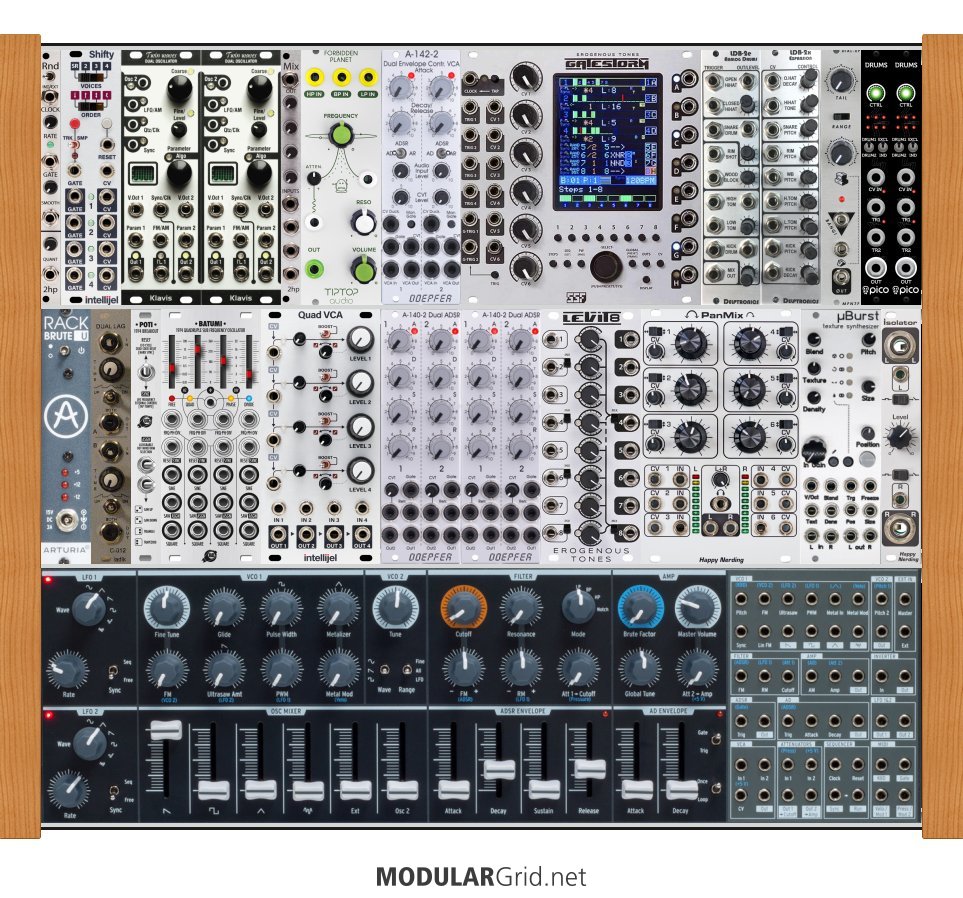OK...I've written a few of these educational essays about why you might want to get into modular, the best ways to do this, what a typical build consists of, and so on. But this time out, I really would like to make some points about why a user should NOT get into modular synthesizers.
Of course, there's some very obvious points off the top, such as not having sufficient capital to sustain a build, not having a basic knowledge of how synthesis works, and the like. But there's actually some value in explaining a lot of these “disqualifiers”, and how you as a prospective user might fit into their various categories and thereby avoid a lot of headache and pointless spending. If you fall into any of the following categories of users, then modular is NOT what you're looking for.
1) “I need lots of presets!” No. You're utterly screwed on this one. While there are certain modules that can store preset states, and there's certainly the example of the Buchla 200e and its storage/recall abilities, the core principle of modular architecture involves making extensive manual patches. So, even if you had full setting recall, getting just one patchcord out of place will render that preset capability pointless to varying degrees. Modular is NOT for the preset crowd that's looking for loads of factory patches, and it's NOT for anyone who has any trepidation about sound design. Modular is for explorers, individualists, people seeking new and different ways of pushing a creative envelope. There will be no piles of presets out there for this, so if you need your hand held where patch creation is concerned or if you're unwilling/incapable of learning the ins and outs of creating them from scratch in whatever architecture your own build gives you to work with, you really shouldn't be thinking about going modular.
2) “I don't know how this works, but lots of cool people have modulars!” ...and you will also notice that those cool people know what they're doing with them, for the most part. True, there are a few electronic musicians with more money than sense who have their twistenknobs und blinkenlichts as stage props, but these people aren't going to be the ones anyone will be listening to in a decade's time...if even a year's. DO NOT get a modular synth and expect that you will be buying a ticket to instant cool. Like anything else in music, no amount of windowdressing will disguise your lack of capability in the long run. This is sort of the inverse of the unprofessional dumbshit behavior of blaming the equipment for your failure of talent, and it will work just as badly as that moronic blameshifting tactic will.
3) “Lots of people are getting into modular!” This is sorta-kinda true...but only sorta-kinda. It might seem as if the whole electronic music world is going bonkers for knobs'n'wires these days. But keep in mind that, back in the mid-1980s, everyone thought that digital synths with only one or two programming interface controls were the shit. The fact that a lot of people are “getting into modular” has more to do with fashion and trends, and not quite so much to do with music. People always gravitate toward what they think is the newer/shinier/faster thing, even if doing so doesn't make a helluva lot of sense in the long run. If modular fits your idea of where you want to go musically, then sure, dive on in. But if you haven't thought that idea out carefully yet, you might want to consider something a lot simpler first, then hit the inherent limitations of that and by doing so, come to comprehend what the user-definability of modular is for.
4) Polyphony. Remember what I said above about “more money than sense”? Modular synthesizers are notoriously NOT polyphonic. This isn't to say that you can't do that, though...because you can. But it's utterly insane. Consider a present-day polysynth, such as the Moog One. So...each voice on that synth has three VCOs, two VCFs, three EGs, a ring modulator, a source mixer, a stereo VCA, and we've not even gotten into the LFOs, the sequencer/arpeggiator, the controller and its layer/split capabilities, and the effects processing, plus MIDI and a whole bunch of other crap I'm forgetting at the moment. $8k ets you sixteen of these voices, plus the aforementioned crap. This comes out to FORTY-EIGHT VCOs and EGs, THIRTY-TWO VCFs, SIXTEEN VCAs and mixers, and so on. If you thought eight grand was spendy, try adding all of the above up on ModularGrid. Now try cramming it into the same space as the Moog One (not happening). Then try and apply a recall/storage system...which, as I noted earlier, you really can't, so each new patch will require retweaking all of those individual modules and changing bushels of patchcables. Utterly...insane. But you CAN DO IT...if you've lost your damn mind already or are looking to do so in the near future, and you also own an investment bank.
5) “I don't know where I want to go with my music, but modular will help me define that!” No...no, it won't. Nor will any other piece of equipment you happen to be able to afford (see #2 above). And in all truth, modular will wind up frustrating you even more as a musician if you don't have a clear vision for your work. It offers near-limitless sonic possibilities, but if you've not developed a sense of direction and the discipline needed to follow that direction, having the ultimate sonic sandbox at your disposal is just going to screw you up. When you look more closely at music and those who make it successfully, you're more apt to see people who work within defined limitations, either by chance or choice. So until and unless you've gotten used to the idea of having musical limits and staying in an artistically-successful comfort zone in those, introducing a limitless device into your environment will probably result in something more disastrous than revelatory.
6) And lastly, “I haven't researched this, but I want/need one.” No. Do the research first. It is what sites like ModularGrid (and many others) exist for. Ask dumb questions, because when we're talking about the possibility of dropping thousands of moneys on hardware over longish periods of time, there are ultimately no dumb questions. And whenever you're contemplating the purchase of gear, whether that's a stompbox or a Steinway, there are two main questions you need to be able to honestly answer of yourself: “Does this purchase make musical sense?” and “Is this the most effective way of accomplishing that musical goal?” If you cannot formulate an answer to BOTH of these questions each time you consider some new device, then DON'T BUY IT. The inability to answer those key questions is the indicator that you've not done your research up to the level of information where you understand the point of your decision. Until you can come up with those two answers, don't even think about whipping out the Magic Plastic.
Basically, it's not a simple decision to dive headlong into the modular synth world. Hopefully the above points will help some of you reading this to get a better idea...for yourself, by doing your homework...of what this sort of equipment and its working paradigm can do, and to avoid making costly mistakes that'll have you kicking yourself for quite some time afterward.



